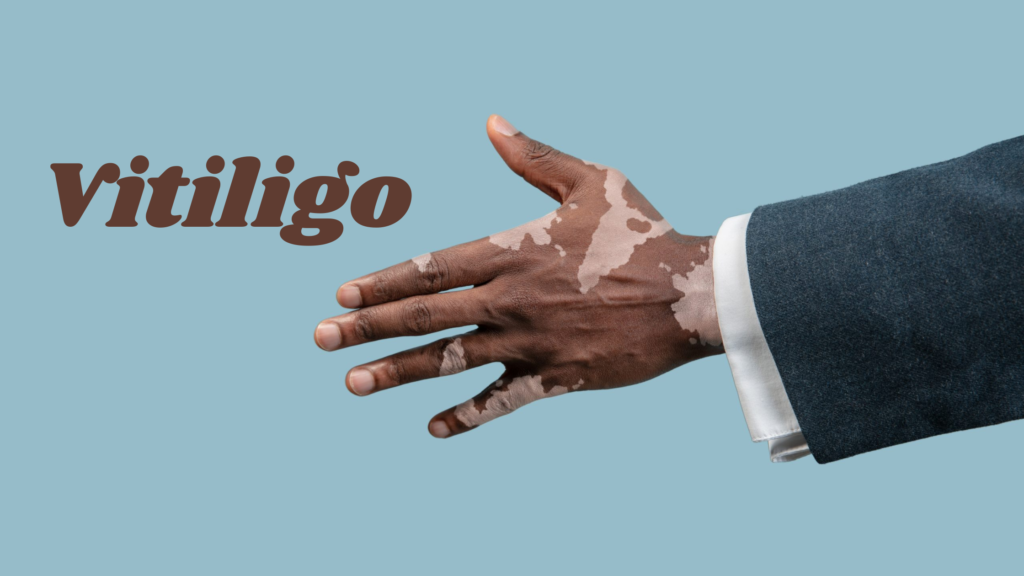Vitiligo
Vitiligo is a long-term skin condition where patches of skin lose their pigment (color) due to the destruction or malfunction of melanocytes — the cells that produce melanin (skin pigment). It can affect any part of the body, including hair and inside the mouth.
🔍 Causes
- Autoimmune response – the body attacks its own melanocytes
- May be triggered by:
- Genetic predisposition
- Sunburn or skin trauma (Koebner phenomenon)
- Stress or chemical exposure
- Not contagious or life-threatening
⚠️ Symptoms
- White or depigmented patches on the skin
- Often appears on hands, face, genitals, and around body openings
- Symmetrical (common type) or segmental (limited to one side)
- Premature whitening of hair, eyebrows, or eyelashes
📋 Types of Vitiligo
- Non-segmental (Generalized): Most common, affects both sides of the body
- Segmental: Affects one side or part of the body, often stable
- Focal: One or a few patches in a small area
- Universal: Loss of pigment over most of the body (very rare)
🧪 Diagnosis
- Clinical evaluation of skin
- Wood’s lamp exam (UV light)
- Blood tests for associated autoimmune conditions (e.g., thyroid disease)
🛠️ Treatment Options
There is no cure, but treatments can restore some pigment or slow progression:
Topical Treatments
- Corticosteroids (especially in early stages)
- Calcineurin inhibitors (for sensitive areas like the face)
Light Therapy
- Narrowband UVB therapy – common and effective
- Excimer laser – for small areas
Other Options
- Depigmentation therapy – for widespread vitiligo
- Skin grafts or micropigmentation (tattooing) – in select cases
- Cosmetic camouflage – makeup or self-tanning products
🛡️ Lifestyle and Support
- Use sunscreen to protect depigmented areas
- Psychological support or counseling if self-esteem is affected
- Support groups and educational resources can help with coping
